Amazing Experiences for a Nyingchi Tour in Tibet
Nyingchi tour in Tibet is one of the top-selling tours in Tibet. Nyingchi is noted for its verdant mountain terrain and clear waterways, lying at the point where the Himalayas join the Hengduan Mountains. A large number of river valleys and alpine gorges, not to mention the slightly milder climate than higher up on the plateau, mean that the region is often referred to as the ‘Switzerland of Tibet’. Due to its lower altitude and unique location, the area enjoys a temperate semi-humid climate that promotes the growth of lush, green forested areas. Milder weather prevails most of the year, which makes it an ideal place to travel to no matter when you are visiting. The permanently evergreen region of Tibet, Nyingchi has a wealth of astounding things to see and do for the discerning traveler.
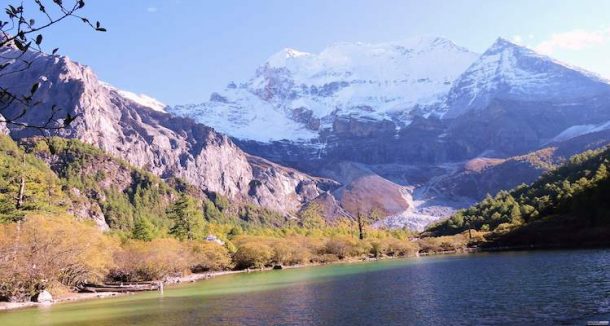
Table of Contents
Stroll along the Niyang River
The longest tributary of the Yarlung Tsangpo River, the Niyang River valley is crystal clear and renowned for its breathtaking beauty. In Tibetan, the name means “the sad tears of a fairy”, and the river is one of the must-visit locations in Nyingchi Prefecture. The upper reaches of the river lie in a vast flat meadow, while the lower reaches are hemmed in by dense forests on both banks. One of the most picturesque scenes in the world, one of the most popular spots to visit is the Rock Pillar, which sits in the middle of the river and is highly regarded in the local religion. The riverbank is also one of the most popular places for tourists in the spring, to see the beauty of the stupendous peach blossoms. These trees bloom in early spring, and the whole riverbank is covered with lilac and violet blossoms. And spring is the ideal time for the famous Peach Blossom Festivals.
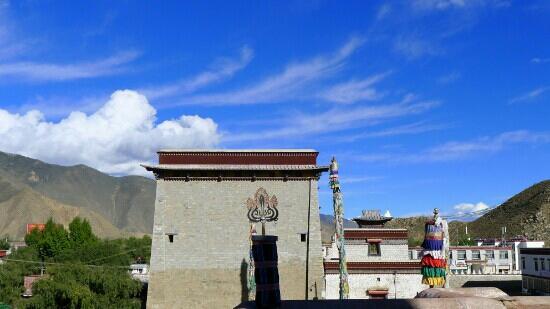
Explore the Lulang Forest in Nyingchi
One of the most beautiful stretches of landscape in the world is the ancient and primeval Lulang Forest, lying next to the Sichuan Tibet Highway a short drive from Bayi County. The Tibetan name translates to mean “the place that will make you forget your home”, and this outstanding plateau-mountain meadow can do just that. One of the best places in Nyingchi for viewing the remote Namche Barwa peak, the highest mountain in Nyingchi at 7,782 meters. Stretching for 15 kilometers, yet just one kilometer wide, this meadow is known to be a fairyland where the gods live in scenic beauty. In spring, the area is covered with azalea blossoms, while the summer brings a sea of golden wheat spreading across the valley. Autumn brings a multitude of vibrant rustic colors, while the snows of winter turn the forest into a winter wonderland.
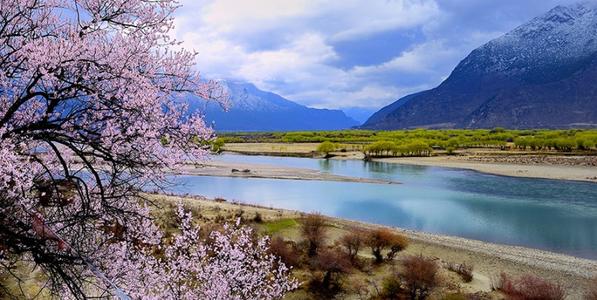
Visit Draksum-Tso Lake
Fed by glaciers and emptying out into the Bar River, Draksum-Tso, also known as Basum Tso, is one of the most famous scenic spots in the TAR. Lying in Gongbo’gyamda County, the lake is listed as one of the top tourist spots in the world by the World Tourism Organization. Surrounded by snow-capped mountains and dense forests, this alpine lake is one of the most beautiful spots in Tibet. The northwest shore of the lake has a giant stone with a hole through it, which people walk through to obtain merits and pray for the cure of illnesses.
In the middle of the lake lies a small island of around 2,000 square meters known as Tashi Island. The island is the home of the Tsozong Gongba Monastery, and the main access to the island is by boat, though you can walk along the wooden docks. Boat trips to the island across the lake also head for the sacred spots at the far end of the lake, where you can land and walk to the holy sites. One of the sites is a waterfall, where the pilgrims that visit rub themselves against the stones and squeeze into the crevices to attain merits.
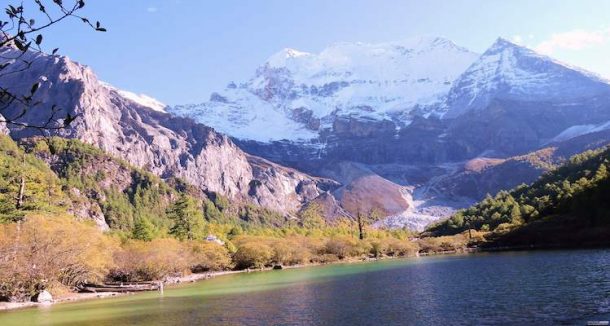
The Tsozong Gongba Monastery is a Nyingma Sect monastery that dates back to around 1400. Tsozong Gongba literally means “castle in the lake”, and is made up of four small buildings surrounding an inner courtyard. The monastery now only houses a few nuns from the Nyingma tradition but has been linked to the famous Tibetan opera, the Epic of King Gesar. The short kora around the monastery passes by seven almost imperceptible holy sites, including the famous “body-print” of King Gesar and a small sky-burial site.
Taste the Famous Stone-Pot Chicken
Tibet has a lot of unique dishes, but none is as famous as the tasty Nyingchi Stone-Pot Chicken, one of the most delicious of all Tibetan dishes served in Nyingchi. A soup made from local Tibetan chicken, the soup also includes ingredients such as ginseng, Dangshen, conic Gymnadenia tuber, radix-polygons multiflora, angelica, Tibetan caladium, yam slices, rhizoma gastrodiae, coix seed, lily root, ginger, pepper, red dates, medlar, and a host of special local spices. A delicious, and mildly spicy dish, it is only found in its original form in this one place in Tibet.
But what is most unique about this dish is the pot it is cooked in. The stone pot is made by carving out a cauldron from a single piece of stone that is mined from the scarce natural steatite that is found on the steep cliffs of the Yarlung Tsangpo River in Nyingchi. The steatite rock used contains zinc, calcium, and several other elements, all of which are believed in Tibetan medicine to be good for the health.
Tour the Giant Cypress Nature Reserve
Known as King Cypress, the largest of the Giant Cypress trees in Nyingchi stands more than 50 meters (162.5 ft.) tall and is more than 5.8 meters (18.85ft.) in diameter. A unique breed of a cypress tree that is indigenous to Nyingchi, these giant trees grow on the slopes of the Yarlung Tsangpo River at an altitude of 3,040 meters and average around 44 meters tall. King Cypress is believed to be more than 2,500 years old and is said to pre-date even Buddha. And local legend connects the tree to Tonpa Shenrab Miwoche, the ancient founder of the Bon Religion in Tibet. A whole forest filled with the tallest trees in Asia, this is one of the most humbling experiences in Tibet.
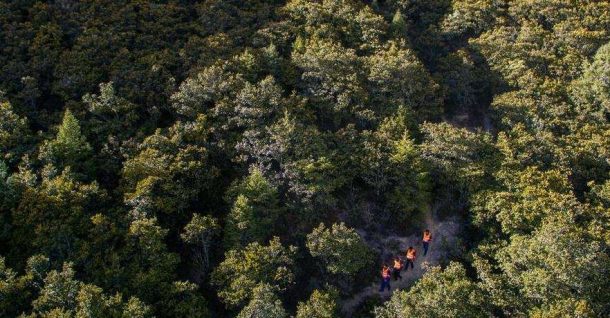
Visit the Picturesque Ranwu Lake
Surrounded by peaks of more than 5,000 meters and virgin forests, Ranwu Lake in Nyingchi is the largest lake in Southeast Tibet. The name of the lake means “the place where dead bodies pile up”, and it is said that it is the place of a legendary war between men and monkeys, in which the men tricked the monkeys into fighting each other until all but one was dead. The lake is surrounded by many amazing sights, including the Azhagongla Glacier to the south and the Bosula Peak to the northeast. The lake is often named as one of the most beautiful sights in Tibet and has been described as an oil-painting come to life.
Recent Posts
The Ultimate Guide to Tibet Tours, Travel, and Trekking Adventures
How to Explore Tibetan Culture
Exploring Lhasa:The Heart of Tibet
All Categories
- About Tibet
- book a Tibet tour
- Buddhism Practice
- Budget Tour
- China-Tibet Train
- Customized Tibet tour
- Historical Sites
- Hot Springs in Tibet
- News
- Photography in Tibet
- Tibet attraction
- Tibet Group Visa
- Tibet Motorcycle Tour
- Tibet Small Group Tours
- Tibet Tours and Tibetan Tour Guide
- Tibet Train
- Tibet Travel FAQs
- Tibet Travel Information
- Tibet Travel News
- Tibet Travel Permit Update
- Tibet Travel Prices Rises
- Tibet Trek
- Tibet Trekking Tour
- Tibet weather and climate
- Tibet Wildlife animals
- Tibet Winter Tour
- Tibetan Buddhism
- Tibetan Cultural Features
- Tibetan Culture and Poeple
- Tibetan Festivals
- What to see in Tibet



